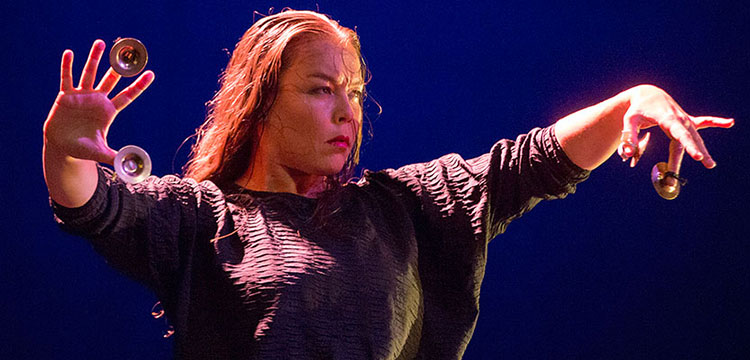Impulso. Dance: Rocío Molina. Guitar: Eduardo Trassierra and Yerai Cortés. Voice: José Ángel Carmona and Israel Fernández. Rhythm: José Manuel Ramos ‘Oruco’. Sala Chicarreros. Series: Jueves Flamencos de Cajasol. Fecha: Wednesday, June 19th, 2019. Full house.
Sara Arguijo
Rocío Molina is a body at boiling point. For her, each note of the guitar, each singer’s lament or hand-clap in rhythm is a bolt of energy that possesses her, moves her around and transforms her. The impulse that causes her to explore her own physical and emotional limitations to the utmost. Which is why, seeing her dance you end up exhausted, defeated, feeling unable to digest the trance the Málaga dancer generously invites us to experience each time she steps up on stage.
But if you haven’t seen her yet, don’t think she constructs this discourse – or better yet, this dialogue – in a rage, brazenly or grotesquely. Rocío Molina makes the audience sit up straight and lock their eyes on her precise, and at times imperceptible movements, because she plays, enjoys and responds with the unexpected. In other words, aside from her supernatural command of technique, what truly makes you connect with the artist is her sincerity and honesty. The way in which she over-exposes herself and invites you to join her in a personal exorcism which doesn’t mean to do away with any demon, but rather liberate the most natural instincts. Like that woman who stood naked so others could look at her and take measure, as Marta Sanz writes in Anatomy Lesson. As if her body were the text in which her biography has been written.
In this way, in the close of the Jueves Flamencos de Cajasol series, Rocío Molina presented a simple well-balanced register in which the full clapping of El Oruco, the melancholic voice of Israel Fernández, the luminous sound of José Ángel Carmona, the provocative inspired guitar of Eduardo Trassierra and the sensitivity and coddling from the strings of Yerai Cortés easily fit in. All joined in constructing a dynamic sequence of contrasts and reflections with inspiration at the epicenter.
Between one thing and another, unstoppable and without respite, she was dancing, and showing in each of the forms, a distinct purpose and intent, because it’s one thing to do footwork and another to dig in your heels to stomp out doubts. Thus, she moved breathlessly, just as when frozen, to dance to the silence or slowly moved her wrists in a precious exercise that was absolutely masterful, or when she twisted enigmatically and seductively in taranto, protested powerfully in bulerías while seated, flirted with a cane in tangos and sentenced in soleá with long train dress (bata de cola). Associating as would a forensic scientist, each piece with a muscle, an organ, a bone…
The bottom line is, Rocío Molina again demonstrated, this time on a small stage, what she already made clear in the unforgettable four-hour improvisation carried out at the 2016 Bienal de Sevilla. That at this point in time, in artistic resources, movement, drama, creativity and personality, she’s at the top, with all the rest trailing behind.
Photos Remedios Malvarez
